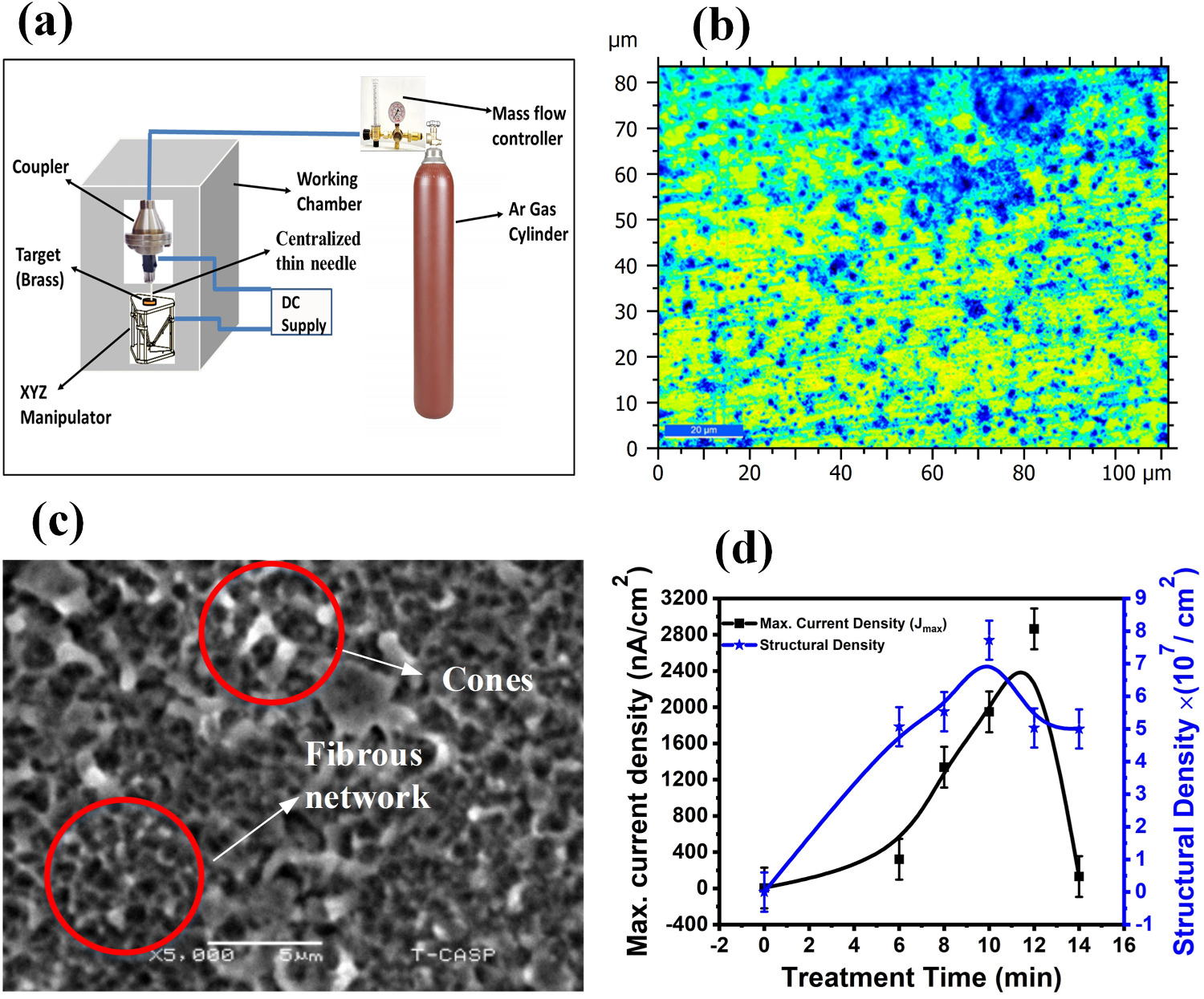https://doi.org/10.1140/epjd/s10053-025-00973-4
Regular Article - Plasma Physics
Effect of Ar microplasma irradiation on surface, structural and field emission properties of brass
1
Centre for Advanced Studies in Physics, GC University Lahore, Lahore, Pakistan
2
Centre of Excellence in Solid State Physics, University of the Punjab, Lahore, Pakistan
3
The University of Lahore, Lahore, Pakistan
Received:
29
September
2024
Accepted:
28
February
2025
Published online:
25
March
2025
Ar microplasma irradiation is used to induce morphological, structural, electrical and field emission modifications of brass for different treatment times. The ablation depth evaluated by optical microscopy analysis gradually increases and then decreases with the increase of treatment time. Scanning Electron Microscope (SEM) analysis reveals the generation of microscale holes, blisters and fibrous structures which are explained on the basis of collisional/thermal sputtering, diffusion and bursting of gaseous bubbles. X-Ray Diffraction (XRD) analysis reveals absence of new compositional phase however, variation in peak intensities, crystallite size, dislocation line density, and stress/ strain is observed. The potential of microplasma treated brass to be used as field emission cathode is evident from significantly improved field emission parameters. The correlation of field emission parameters with the structural density, work function and electrical conductivity measurements suggests geometrical field enhancement, increased number of emission sites and enhanced charge transport properties offered by the grown structures.
Copyright comment Springer Nature or its licensor (e.g. a society or other partner) holds exclusive rights to this article under a publishing agreement with the author(s) or other rightsholder(s); author self-archiving of the accepted manuscript version of this article is solely governed by the terms of such publishing agreement and applicable law.
© The Author(s), under exclusive licence to EDP Sciences, SIF and Springer-Verlag GmbH Germany, part of Springer Nature 2025
Springer Nature or its licensor (e.g. a society or other partner) holds exclusive rights to this article under a publishing agreement with the author(s) or other rightsholder(s); author self-archiving of the accepted manuscript version of this article is solely governed by the terms of such publishing agreement and applicable law.





